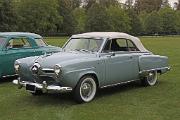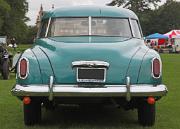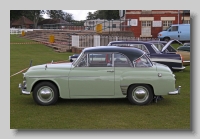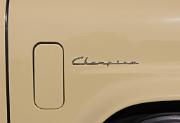
aa Studebaker Champion 1950 Business Coupe badgec
Studebaker Champion 1950 Business Coupe - badge on front wing
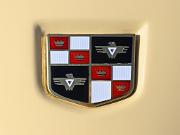
aa Studebaker Champion 1950 Business Coupe badges
Studebaker Champion 1950 Business Coupe - badge on bonnet.
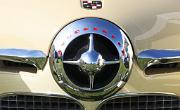
ab Studebaker Champion 1950 Business Coupe grille
Studebaker Champion 1950 Business Coupe. Designed continued under Raymond Loewy Studios after the 1946 launch, and after Virgil Exner had been 'let go'. So Bob Bourke dusted off his decade-old idea for the spinner and it was approved and advertised as 'The Next Look'
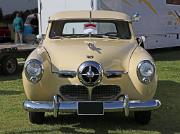
ac Studebaker Champion 1950 Business Coupe head
Studebaker Champion 1950 Business Coupe. Given a 'Spinner' nose and forward wings Bob Bourke explained 'The Next Look' as having the front of an aircraft, and it appeared first on the 1950 Champion and Commanders. A 2,775cc straight six powered the Champion.
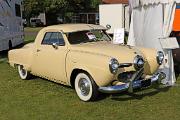
Studebaker Champion 1950 Business Coupe front
Studebaker Champion 1950 Business Coupe. Designed under Raymond Loewy Studios , the Champion was a hit for Studebaker, and was the first new car to launch in America after the War.
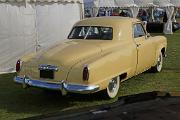
Studebaker Champion 1950 Business Coupe rear
Studebaker Champion 1950 Business Coupe. Virgil Exner designed the bodies, including 3-passenger and 5-passenger coupes, this lowly Business Coupe, and the upmarket Starlight Coupe which had four sections of glass in the rear window. The Business Coupe only had a single 3-seater bench seat, and the rest of the space was given over for the wares of the businessman.
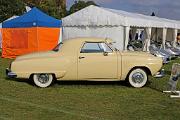
Studebaker Champion 1950 Business Coupe side
Studebaker Champion 1950 Business Coupe. The Studebaker Champion was built on a 112-inch wheelbase, whilst its more expensive Commander sibling was on 119-inches. Virgil Exner designed the bodies, including 3-passenger and 5-passenger coupes, this lowly Business Coupe, and the upmarket Starlight Coupe.
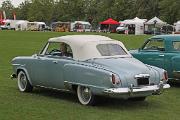
Studebaker Champion 1950 Convertible rear
Studebaker Champion 1950 Convertible. For 1950 Studebaker increased the Champion wheelbase to 113-inches (and the Commander to 120-inches)
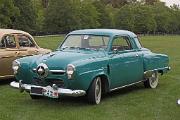
Studebaker Champion 1950 Starlight Coupe front
Studebaker Champion 1950 Starlight Coupe. For 1947 Studebaker introduced the Series III Champion designed by Virgil Exner after Studebaker requested him to do it separately from Raymond Loewy. Champions had a 2,769cc straight six engine.
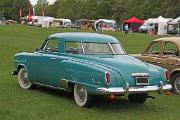
Studebaker Champion 1950 Starlight Coupe rear
Studebaker Champion 1950 Starlight Coupe. Literally the star of the 1947 Studebakers was the Starlight Coupe available on both the 112-inch Champion and the 119-inch Commander. the four-panel wraparound rear window was the design of Virgil Exner.
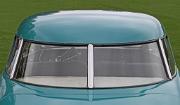
Studebaker Champion 1950 Starlight Coupe window
Studebaker Champion 1950 Starlight Coupe. The four-piece wraparound rear window singled the Starlight Coupe out not only from other Studebakers in 1947, but from all other cars on the market. Virgil Exner created this window.
